Ryan Hall's Blog, page 260
May 1, 2016
Photos: KiDS ROCK Nashville
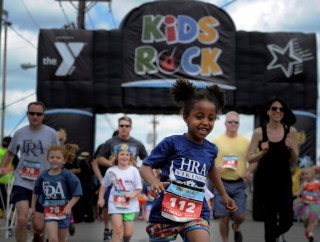
Photo Gallery
1 of {count}
Back to Start
View Larger Image
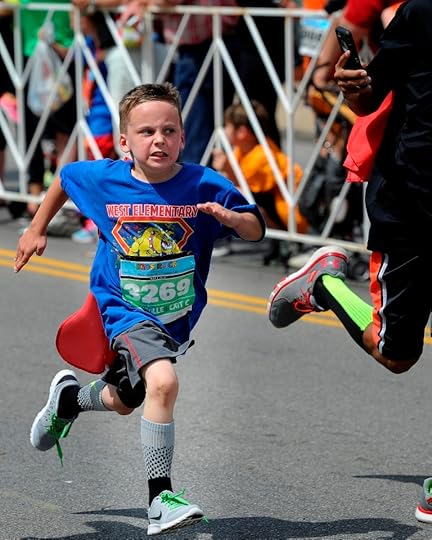
KiDS ROCK NASHVILLE
View Larger Image
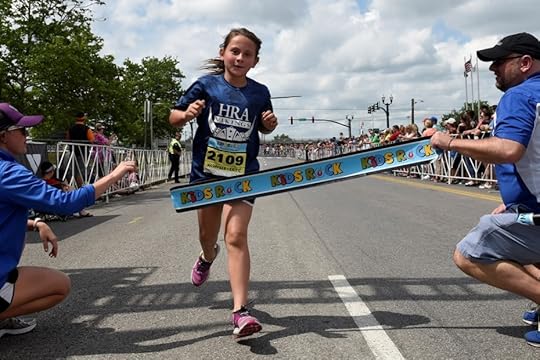
KiDS ROCK NASHVILLE
View Larger Image
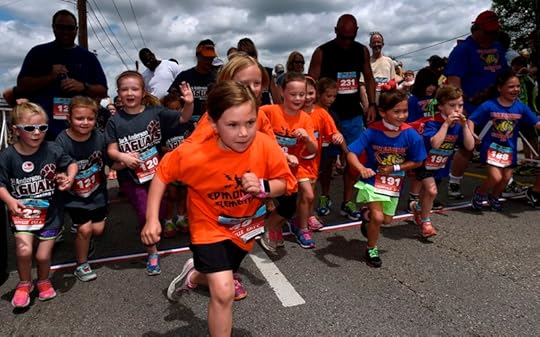
KiDS ROCK NASHVILLE
View Larger Image
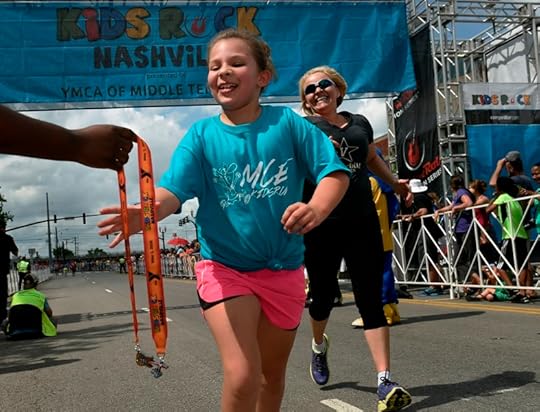
KiDS ROCK NASHVILLE
View Larger Image
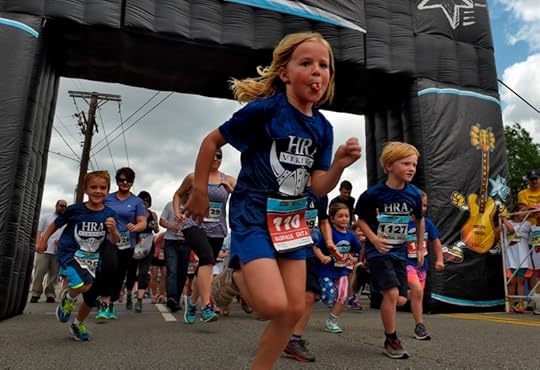
KiDS ROCK NASHVILLE
View Larger Image
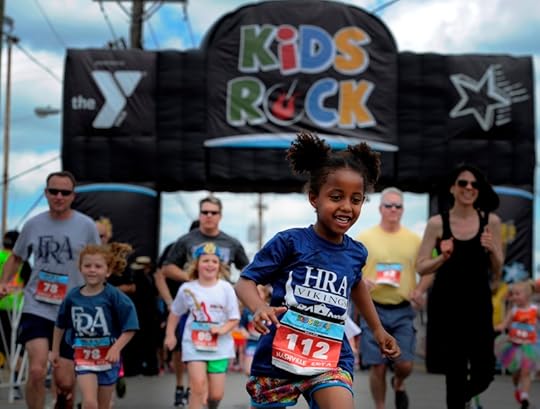
KiDS ROCK NASHVILLE
Related Galleries

Photos: St. Jude Rock ‘n’ Roll Nashville
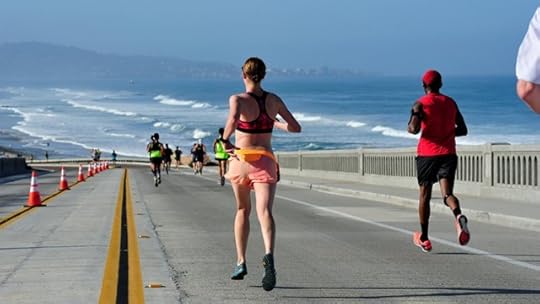
Photos: The Beautiful Scenery of the La Jolla Half Marathon

Photos: 2016 EDP Rock ‘n’ Roll Madrid Marathon

The Faces of Boston: Amazing Images from the 2016 Boston Marathon

More Galleries
More than 3,500 future marathoners took over Nissan Stadium for Kids Rock Nashville presented by YMCA of Middle Tennessee. Local children in kindergarten through seventh grade completed a marathon-training program, where they accumulated 25.2 miles over a four to eight week training period and then finished the final mile today on race day. The non-timed, non-competitive event has become synonymous with introducing the fun of fitness and running to kids for more than 15 years. Photo Credit George Walker
The post Photos: KiDS ROCK Nashville appeared first on Competitor.com.
April 30, 2016
Familiar Faces Win St. Jude Rock ‘n’ Roll Nashville
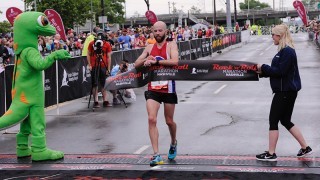
NASHVILLE, Tenn. — There are certain guarantees in Nashville. Fantastic country music, sumptuous barbecue and Scott Wietecha winning the St. Jude Rock ‘n’ Roll Nashville Marathon.
A 34-year-old elementary school P.E. teacher from Hendersonville, Tenn., Wietecha won the St. Jude Rock ‘n’ Roll Nashville Marathon for the fourth year in a row today, in 2 hours, 25 minutes, 42 seconds.
Brian Shelton of Cookville, Tenn., finished second in 2:34:43.
In the 201st race of the Rock ‘n’ Roll Marathon Series, Wietecha became the first person to win one of the events four times. Meb Keflezighi has won the Rock ‘n’ Roll San Jose Half Marathon three times.
Melanie Kulesz of Oak Ridge Tenn., won the women’s marathon in 2:59:12. Megan Hovis of Charlotte, N.C., took second in 3:04:52.
Roosevelt Cook of Hesperia, Calif., captured the men’s half marathon in 1:11:15. Julie Stackhouse of Jacksonville, Fla., won the women’s half in 1:22:17.
As if Wietecha didn’t have enough motivation trying to win the race for the fourth year in a row, Shelton gave him extra incentive. The two runners are friends and Wietecha didn’t find out Shelton was running the race until Friday night.
“He told me he was going all out, 100 percent,” said Wietecha. “Me? My preparation was like 85 percent. He was trying to be this sneaky little hobbit, stealing the dragon’s gold. All he did was wake up the dragon.”
At about 16.3 miles, Wietecha came out of First Tennessee Park, the minor league Nashville Sounds’ ballpark, as Shelton entered the ballpark.
“I knew I had about a two-minute lead,” said Wietecha.
He spent much of the remainder of the race looking over his shoulder, trying to spot Shelton, who was nowhere in sight.
“I didn’t want the guy coming in my back yard, stealing my thunder,” said Wietecha. “I didn’t want to lose in front of my (students). You’ve got to protect your home turf.”
Wietecha earned $500 for the victory, plus a $250 bonus for running under 2:26. His fastest time at Nashville is 2:22:41. His marathon PR is 2:17:02.
Kulesz, 24, was also a repeat winner. The former UNC-Ashville runner lopped more than five minutes off of last year’s winning time of 3:04:28. Her goal was to break her 2:58 marathon PR but after starting out fast enough she fell short.
“I don’t know what happened,” said Kulesz, who laughed, then added, “Actually, I know what happened. It got hilly.”
Cook, 36, flew in from California and won the half marathon for the second straight year. Afterwards, he watched age groupers finishing more than an hour after him, admiring their effort.
“We all celebrate the sport we love,” he said. “It doesn’t matter if you’re fast or slow. We’re all suffering. It’s all relative.”
The morning began with the runners getting drenched by a morning rain. The start was delayed by about 30 minutes because of the weather.
Of the lure to run on a damp morning, Nashville’s Latissa Hall, said “It’s the atmosphere, the excitement. Everyone being here. All the bands, the support.”
“And,” said her friend, 57-year-old Renee Buford, “to support St. Jude.”
Formerly known as the St. Jude Country Music Marathon, the event has been rebranded as part of the Rock ‘n’ Roll Marathon Series for the first time in 2016 as the St. Jude Rock ‘n’ Roll Nashville Marathon & 1/2 Marathon. The musically themed road race attracted more than 30,000 entrants who took on the 26.2, 13.1-mile and 5K courses, while passing many of Nashville’s best live bands performing along the route. Nearly 300 runners took the Music City Challenge by running the 5K plus the full marathon or the half marathon. In addition, 3,500 junior racers will participate in KiDS ROCK Nashville presented by YMCA of Middle Tennessee.
During the marathon, thousands of St. Jude Heroes run for a reason, and this year, they hit their goal of $2 million for St. Jude Children’s Research Hospital. Over the event’s 6-year partnership, nearly $8 million has been raised for St. Jude
On Saturday evening, the race continues the strong tradition of great music combined with the premier running event in Tennessee as The Wallflowers take the stage for the Toyota Rock ‘n’ Roll Concert Series at the Bridgestone Arena featuring Marc Scibilia as their special guest.
The post Familiar Faces Win St. Jude Rock ‘n’ Roll Nashville appeared first on Competitor.com.
Photos: St. Jude Rock ‘n’ Roll Nashville

More than 34,000 participants weathered the rain and took to the streets of Nashville for the 17th running of the St. Jude Rock ‘n’ Roll Nashville Marathon. Returning champions, Roosevelt Cook in the half marathon and Scott Wietecha in the marathon, reclaimed their titles with finishing times of 1:11:15 and 2:25:42 respectively.
Photo Gallery
1 of {count}
Back to Start
View Larger Image

View Larger Image
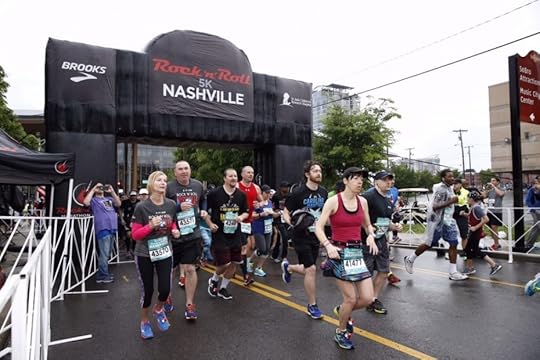
View Larger Image
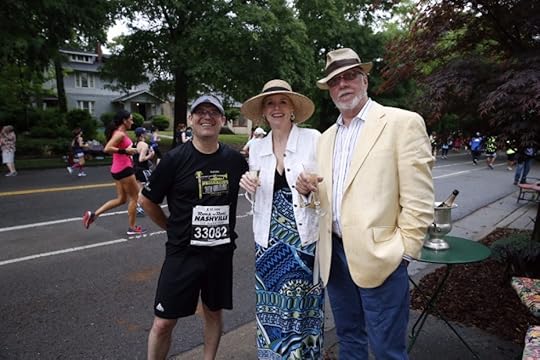
View Larger Image
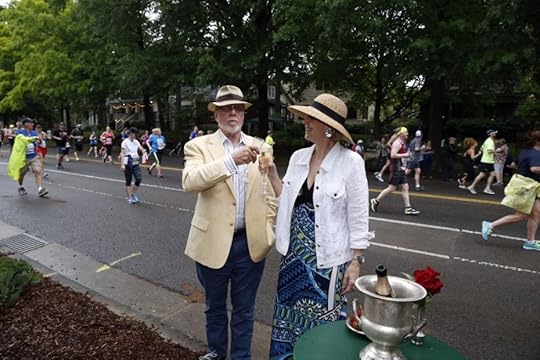
View Larger Image
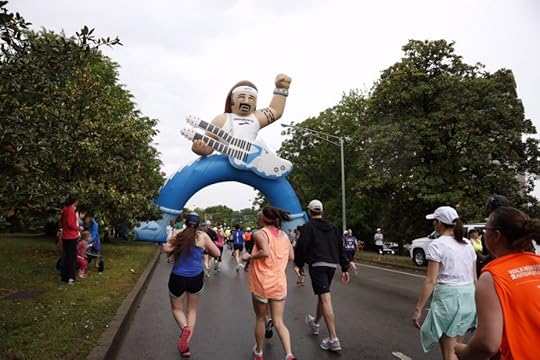
View Larger Image
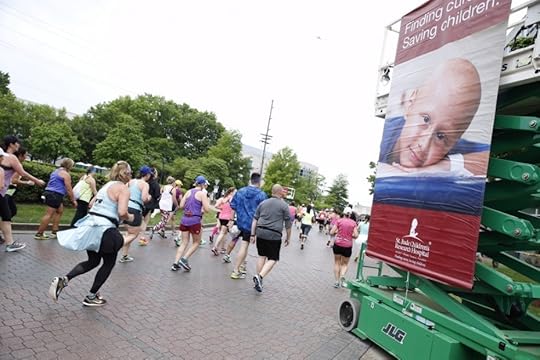
View Larger Image

View Larger Image

View Larger Image
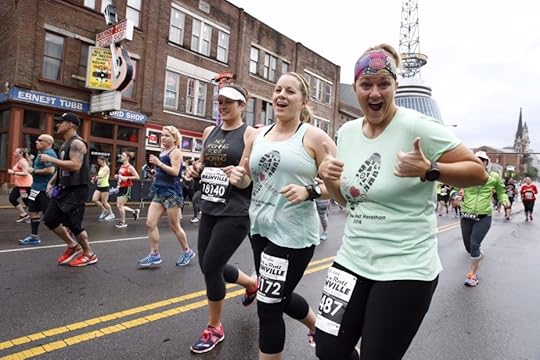
View Larger Image
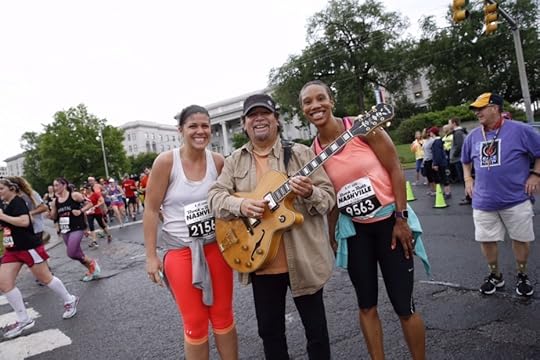
View Larger Image
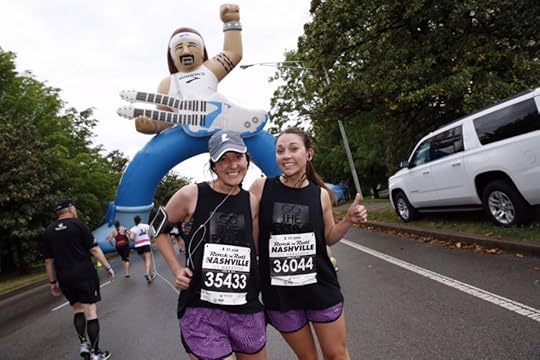
View Larger Image
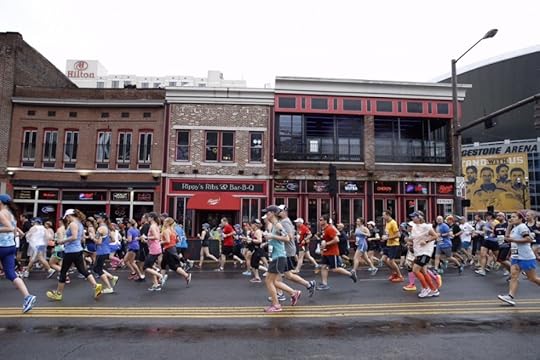
View Larger Image
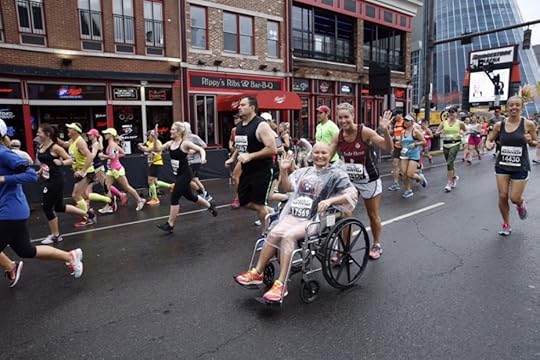
View Larger Image
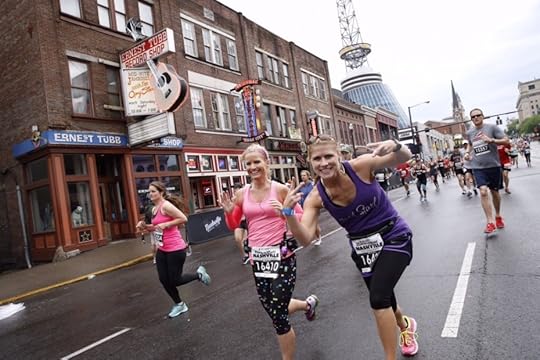
Related Galleries

Photos: Rock ‘n’ Roll Raleigh
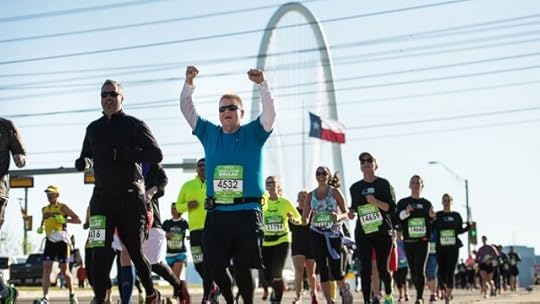
Benson Chesang and Kelsey Bruce Triumph at Humana Rock ‘n’ Roll Dallas Half Marathon
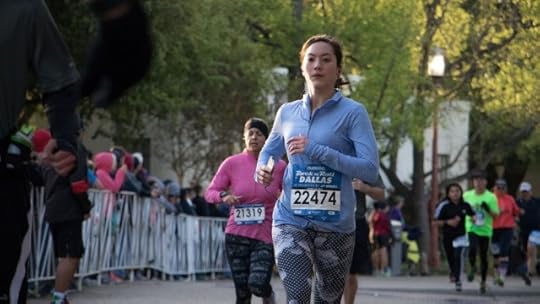
Runners Rock the ‘Big D’
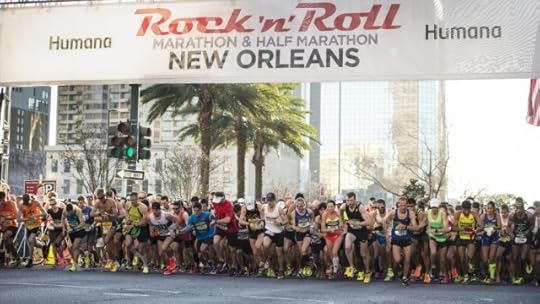
Runners Rock the Big Easy

More Galleries
Credit: Donn Jones
The post Photos: St. Jude Rock ‘n’ Roll Nashville appeared first on Competitor.com.
April 29, 2016
Puma Introduces ‘Raceable Tech’ With the BeatBot Pacing Robot

Introducing the BeatBot, a self-driving robot that can serve as a pacer—or a challenger—during workouts.
As you can see in the video above, Puma’s innovative robot can follow a line (like on a track) at the pace you can control. Think a mechanical rabbit for humans.
According to a Fast Company article, the BeatBot is only available to Puma-sponsored athletes and teams for now. But it could be a glimpse at a training tool of the future.
The post Puma Introduces ‘Raceable Tech’ With the BeatBot Pacing Robot appeared first on Competitor.com.
Binge-Eater Turned Marathon Training Coach Loses 100-Plus Pounds
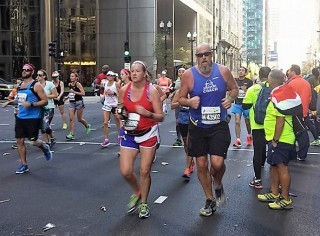
Kevin Collier (right) running last year's Chicago Marathon.
Three hundred and eighty-seven pounds. Kevin Collier might stand a sky-scraping 6 feet, 9 inches, but 387 pounds? And this is on a guy who weighed 170 pounds his senior year in high school, a guy who played football, basketball and ran track.
“I like to eat. I like to drink, and was pretty lazy is the best way to put it,” says Collier, 45, a middle school technology specialist in St. Louis.
Today, Collier is a sliver of his former self, weighing at 274 pounds. He’ll be among the 34,000 runners, walkers and wheelchair athletes pounding the streets on April 30 for the St. Jude Rock ‘n’ Roll Nashville Marathon & 1/2.
“Running truly saved my life,” says Collier, who will be running his sixth marathon
So how do you go from 170 pounds in high school to 387? One bite of pizza at a time and one sip of beer at a time. Before he turned his life around, Collier says it was routine for him, four or five nights a week, to order a 16-inch pizza, garlic cheese bread, and a deluxe salad. Then, over the course of five to six hours, consume an entire case of beer.
At 24 12-ounce brews, that’s 288 ounces of beer.
“I wouldn’t throw up,” says Collier, who was also smoking almost two packs of cigarettes a day. “I could probably pass a field sobriety test. I guess I was blessed with a high tolerance level for alcohol.”
One day at work at a different technology job, Collier began feeling chest pains. His boss told him they needed to call 911. Collier declined, reasoning the feeling wasn’t uncommon, that it was probably indigestion.
That night he told his then fiancée about the incident.“We’re not going through with the [wedding] until you see a doctor,” she told him.
On Dec. 31, 2007, at 37 years old, Collier visited a doctor and experienced what he calls his “ah-ha” moment. The doctor told him he was pre-diabetic. His cholesterol numbers were shockingly high.
“It scared me to death,” Collier recalls. “More than anything, it was the first time somebody finally told me, ‘You’re obese.’”
That same day he signed up for a 5K nine weeks down the road, and found a running program online called “The Couch to 5K Running Plan.”
“I remember telling people, ‘Hey, if you want to come make fun of me and see the fat guy running a 5K, come out,’” Collier says.
Wearing high-top basketball shoes, Collier finished the 5K, and thus began a metamorphosis.“That’s when I was reborn,” he says.
Raw vegetables and salads began replacing 16-inch pizzas. He weaned himself off cigarettes, quitting completely seven years ago. Workouts combining walking and jogging shifted to just jogging.
He ran as many 5Ks as he could afford in 2008, stretching himself to a 10K later that year. In 2011, he ran his first half marathon. His weight dropped to as low as 262 pounds when he ran the Chicago Marathon last October, finishing in a personal best of 5 hours, 16 minutes.
“And I’m not done,” Collier says. He longs to drop his half marathon PR from 2:10 to sub-2 hours. He vows to break 5 hours in the marathon.
Now, Collier is paying his love of running forward. He’s a marathon and half marathon training coach at the Fleet Feet running store in St. Louis. He trains a lot of first-timers and at the beginning of programs, e-mails them an account of his story.
Last year at Rock ‘n’ Roll Nashville, Collier helped train a woman, who was a St. Jude national fund raising coordinator, to her first marathon finish. This year, he’s doing the same for his girlfriend.
“I run the races with these people and every time I see them cross the finish line it takes me back to my first 5K,” Collier says. “There’s no better feeling than that.”
The post Binge-Eater Turned Marathon Training Coach Loses 100-Plus Pounds appeared first on Competitor.com.
Improve Your Diet—Don’t Replace It

Most runners, like most non-runners, don’t eat as well as they should. The minority of runners who do eat as well as they should reap a variety of rewards, including better workout performance, faster post-workout recovery, lower body fat levels, and reduced injury risk.
If you want to enjoy these same rewards, you may need to change your diet. There are two general ways to approach this process. One way is to replace your diet with a new and better one. The other is to simply improve your existing diet. Both scientific and real-world evidence suggest that the second approach is more effective. In particular, recent advances in the psychology of habit change indicate that dietary modifications are more likely to stick if they build upon existing routines and preferences rather than replacing them wholesale, as most popular diets require.
Building Better Habits
A diet is simply a collection of eating habits. As everyone knows, habits of all kinds are difficult to change. Nevertheless, people succeed in changing their habits every day. What are the factors that account for these successes? One of them is what I like to call the principle of minimal disruption. According to this principle, a person is more likely to succeed in changing a habit if he or she changes it to the smallest degree that is necessary to achieving a goal. Applied to diet, the principle of minimal disruption calls for us to change our eating habits to the smallest degree necessary to achieve our health and fitness goals.
There is plenty of research showing that altered eating habits are most likely to last when they are least disruptive. For example, a 2007 study by Stanford researchers comparing the effects of four popular weight-loss diets with widely varying ratios of carbohydrate, fat, and protein found that long-term adherence was pretty good for subjects who were randomly placed on a diet whose ratio was reasonably close to that of their current diet and was abysmal for those who were randomly placed on a diet that required drastic changes in their accustomed macronutrient balance.
Of course, the diet you’re most likely to stick with is your current set of eating habits. But your current set of eating habits is not providing the health and fitness outcomes you seek. So you’ve got to change something. What, then, is the smallest degree of change that will do the job?
There are only two things you absolutely must do with your diet to get the results you want. The first is maintain high diet quality. This means getting most of your nutrition from natural, unprocessed foods from every major food group. The other thing you must do with your diet is eat enough to fully satisfy your body’s energy needs but not so much that you accumulate or fail to shed excess body fat.
These two musts leave all kinds of wiggle room. There is an almost infinite variety of different eating habits that fall within the parameters they establish. The likelihood of you sticking with a diet that obeys the two musts will be greatest if you exploit this wiggle room in a way that indulges your personal tastes and preferences, cultural norms, and lifestyle. The smart way to eat better, therefore, is not to trade your current diet for a one-size-fits-all popular diet but rather to measure your current diet against the standard of the two musts and tweak it as necessary to bring it up to standard.
If you were to pick up and skim through any given popular diet book, you would probably find that its author had absolutely zero interest in your current diet—what you like, what you don’t like, what agrees with you, and what doesn’t. Regardless of which specific diet is being peddled in the book, the underlying message is, “This is the way you have to eat. Abandon your current way of eating and start over with this diet.”
By contrast, in my work as a sports nutritionist, I ask clients lots of questions about their current eating habits and then I suggest specific ways to make them better, applying the principle of minimal disruption. I find this approach to be more humane, more pragmatic, and more effective.
The Cheeseburger Example
In large part, the process of improving a diet rather than replacing it consists of adopting healthier versions of preferred foods and meals. Take cheeseburgers as an example. Suppose you have a weakness for fast-food cheeseburgers and you eat them often, despite knowing full well that they are unhealthy.
Many popular diets would require you to give up eating cheeseburgers entirely. The meat patty disqualifies this food for vegans, the bun prohibits it for Paleo dieters, and so forth. But the principle of minimal disruptions allows you to continue eating cheeseburgers, requiring only that you make your own healthy ones at home instead of grabbing them at the drive-thru window.
A standard fast-food cheeseburger is made with processed beef, processed cheese, a white-flour bun, and nothing much in the way of vegetables. All of these foods are harmful to health. A healthy cheeseburger comprises a grass-fed beef patty, real cheese, organic tomatoes, lettuce, onions, and pickles, and a 100-percent whole-wheat bun. All of these foods are beneficial to human health.
And I’ll guarantee that this healthier cheeseburger also tastes better!
The post Improve Your Diet—Don’t Replace It appeared first on Competitor.com.
April 28, 2016
Shoe of The Week: Montrail Caldorado
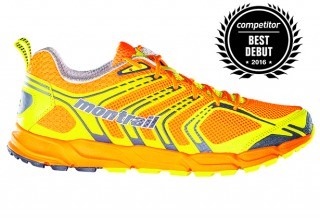
The new Caldorado is a versatile trail running shoe with a good mix of cushioning, flexibility and traction.
Montrail, one of the original trail running shoe brands, is back in a big way this year, starting with the Caldorado. For a firm, noticeably supportive shoe that can handle burly mountain terrain, it feels lightweight and comfortable, and flexes well at the forefoot for a smooth ride. The mid-foot stability was appreciated by those who tend to pronate on smooth terrain, and helped neutral runners fight foot fatigue on long runs. The midsole/outsole blends responsive cushioning with solid traction and a jab-blocking, hard plastic protective rock plate under the forefoot. The seamless upper is comfortable and breathable, while overlays and a toe bumper provide structure and abrasion protection. The insole wraps high around the sides of the foot, adding to the seamless feel of the interior.
This is the shoe for you if … you want a versatile shoe that will work well on a wide variety of trails, from dirt roads to technical routes strewn with rocks and roots.
Price: $120
Weights: 11 oz. (men’s), 9.1 oz. (women’s)
Heel-toe offset: 8mm; 19mm (heel), 11mm (forefoot)
RELATED: Shoe of The Week—Nike Lunar Tempo 2
The post Shoe of The Week: Montrail Caldorado appeared first on Competitor.com.
Like a Crowd? These Are the Largest Road Races in the U.S.
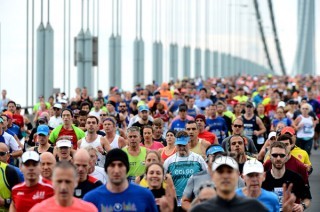
The New York City Marathon is the largest marathon in the U.S. Photo: PhotoRun.net
Running USA recently reviewed 2015 statistics and compiled a list of the largest road races in the U.S. for that year. While some of the races are mainstays atop the list, a few are of note.
The top five largest races in 2015 were also the top five largest races in 2014—the Peachtree Road Race in Atlanta (54,752 finishers), the New York City Marathon (49,365), BolderBoulder (45,336), the Lilac Bloomsday Run (42,294) and the Chicago Marathon (37,395).
A few items of note:
Only six races topped 30,000 finishers in 2015. There were nine in 2014.
Among the top 50 largest road races in the U.S., 19 are half marathons.
The cities with the largest races? Chicago and Washington D.C. each had four races in the top 50.
The Rock ‘n’ Roll Marathon Series made the top-50 list nine times, led by Rock ‘n’ Roll Las Vegas (16th with 23,092 finishers).
Running USA also broke down the largest races in the U.S. by distance. Here are a select few:
1-Mile: NYRR Fifth Avenue Mile (6,320 finishers)
5K: Hot Chocolate 5K Chicago (23,096 finishers)
10K: Peachtree Road Race (54,752 finishers)
Half Marathon: Brooklyn Half Marathon (26,479 finishers)
Marathon: New York City Marathon (49,365 finishers)
The complete report can be found at Running USA.
The post Like a Crowd? These Are the Largest Road Races in the U.S. appeared first on Competitor.com.
Trail of the Week: Red Hill Loop, Carbondale, Colorado

Photo: Ann Driggers
Our Trail of the Week feature is made possible through a partnership with Trail Run Project, a crowd-sourced collaboration by and for the running community. Thanks to Jason Smith for mapping and describing this route.
This route touches on most of the great singletrack in the main Red Hill trail system. However, there are many options to run trails in a different order or direction. You can also do a much longer run by extending out to Elk Traverse / North Side Loop.
On the front side, the main volume of traffic usually ascends Three Gulch & descends Blue Ribbon. If you want a steeper, more direct route with fewer bikers, consider going up Mushroom Rock and linking to the trails on the backside from there.
Expect people, dogs & bikers. Feel free to bring your dog, but please clean up after them because this area is a heavily used. Be on the alert for cryptobiotic soil, stay on the trail to avoid damage to sensitive ecosystems.
The Data
Miles: 6.2
Runnable: 86 percent
Average Grade: 7 percent
Max Grade: 22 percent
Total Ascent: 1,139 feet
Total Descent: -1,137 feet
Highest Elevation: 6,987 feet
For a closer look, check out the interactive map, data, photos courtesy of Trail Run Project:
The post Trail of the Week: Red Hill Loop, Carbondale, Colorado appeared first on Competitor.com.
At 70 Years Young, His First Marathon Awaits
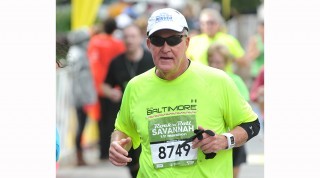
Tim Klement is 70 years old but probably has to flash his driver’s license as proof. At a sinewy 6 feet 1, 170 pounds, he often passes for being in his 50s.
“He gets it all the time,” said Myra Klement, Tim’s wife of 25 years. “‘I can’t believe you’re 70. I can’t believe you can run this far. I can’t believe you’re in this great of shape.’ He doesn’t fit the mold of what people think of as a 70-year-old man.”
Come Saturday at the St. Jude Rock ‘n’ Roll Nashville Marathon, Klement will offer more proof that age is just a number by attempting to run his first road-race marathon. Anyone betting against the semi-retired St. Petersburg, Fla., entrepreneur finishing will be tossing money in the sky and watching it blow away.
The guy has already run the marathon in training too many times to count.
“I run them all the time,” Klement said. “Sometimes I run 30 miles. I’ve done marathons in training for four or five years.”
Boy Scouts are less prepared than Klement, who grew up in the Midwest, says he was the slowest runner on his high school cross country team and used running to manage stress during his professional career.
Klement is so detailed about preparation that in the past two months he tried four different mental approaches during training runs that stretched close to the marathon distance, the goal being to feel relatively fresh at the end.
In one workout, he broke the distance down into four 7-mile runs. “It tired me,” he said. “I couldn’t keep the pace up.”
In a second workout he broke down the race into three 8 3/4-mile runs. “It didn’t allow me to keep my pace,” he said. “You’re sucking at the end.”
Next, he sliced the race into two half marathons. “The first half was too long to make the second half work,” he said.
Finally, he hit a formula that worked, breaking down the workout into two 10-mile runs, topped by a 10K. “At 10 miles, it didn’t feel like I did anything,” he said. “The next 10 didn’t do anything. Then there’s only 6 miles and I’m like, ‘Wow, I can do this blindfolded.”
Klement does not think of himself an athlete.
“I consider myself myself someone who stays active,” he said.
He grew up in Council Bluffs, Iowa, then attended Cal, earning a degree in physiology.
Professionally, Klement worked in managerial positions at multiple companies, often hired to analyze, then oversee changes that increased the companies’ productivity and value.
“Sometimes I was a hired gun,” he said. “I really worked in a situation that a lot of people would have folded under the stress.”
Running represented his stress outlet.
“You go out on a run, enjoy that freedom, release stress and think,” he said.
He began running 5Ks in his 40s, then completed his first half marathon about eight years ago. He estimates he has run three dozen half marathons.
Wanting his first road-race marathon to be more than just crossing off a bucket list item, Klement signed up as a St. Jude hero and has raised nearly $1,000 for the organization, which focuses on children’s catastrophic illnesses.
Said Klement, “I had a mentor who taught me that when you understand you’re not the most important person in your life, you will succeed.”
Besides the fact that he’s 70 and older than probably 99 percent of the participants in Saturday’s marathon, Klement is different that most first-time marathoners in one other sense.
He’s not nervous.
“I know of a variety of ways that I can get from the start to the finish,” he said. “There are times I’ve been out in St. Pete and the temperature’s 80-85, the humidity the same. I was out running. I know how to deal with those types of issues, so I’m calm.”
The post At 70 Years Young, His First Marathon Awaits appeared first on Competitor.com.
Ryan Hall's Blog
- Ryan Hall's profile
- 21 followers



